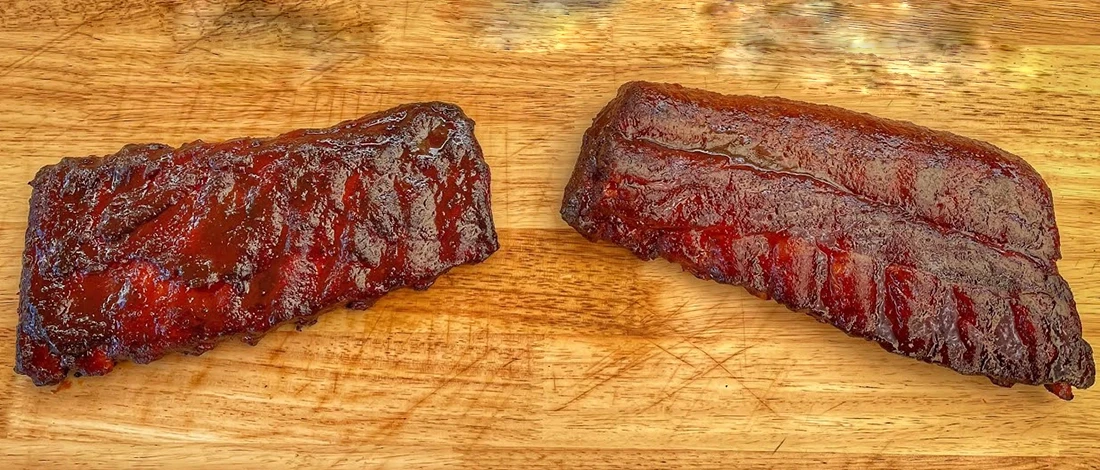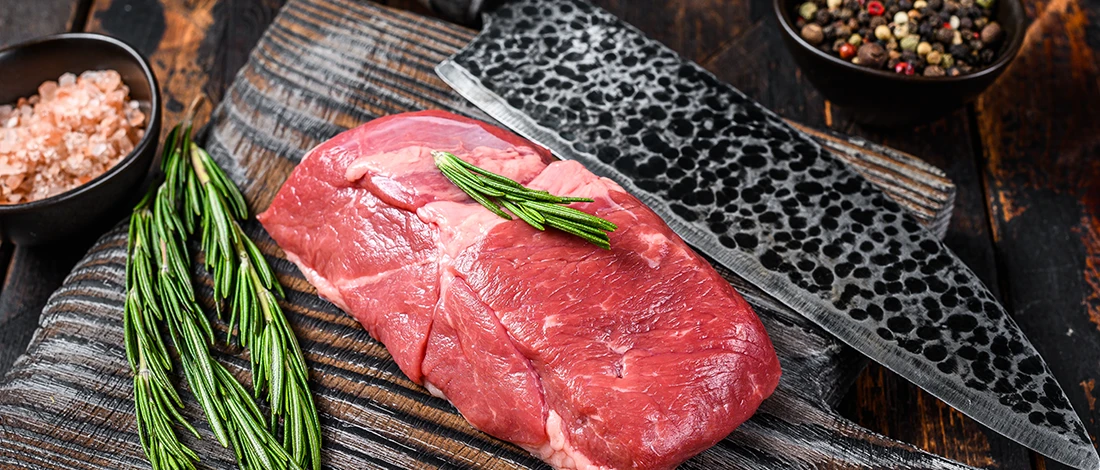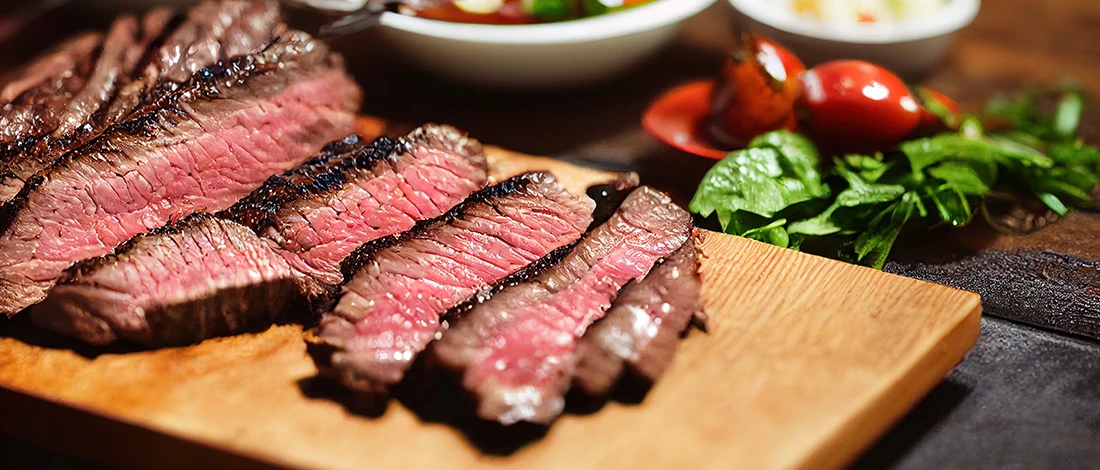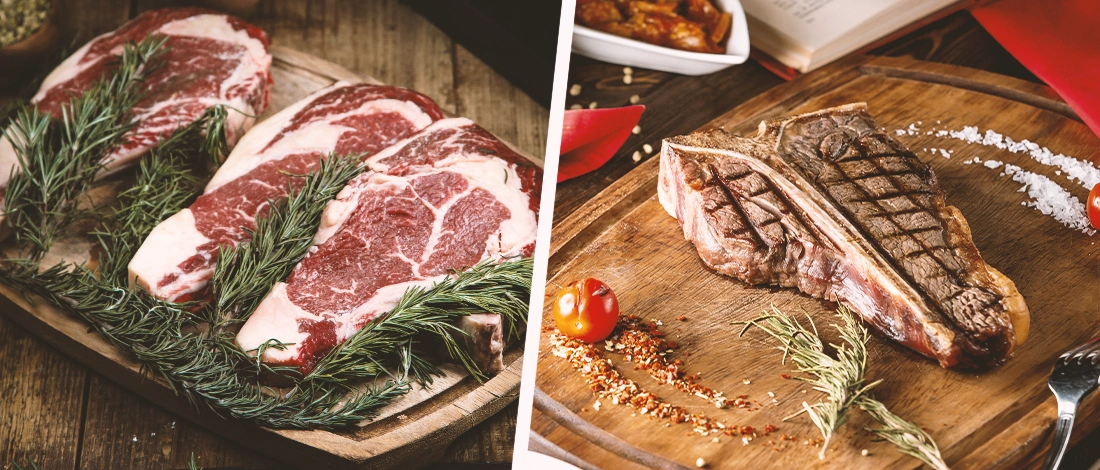As someone who has been on a carnivore diet for 10+ years and loves Italian cooking, I've constantly been asked how to differentiate pancetta from bacon.
To accurately set them apart, I spent the last six weeks researching pancetta and bacon. I also asked my nutritionist for professional assistance to determine whether picking either option is worthwhile.
Everything I learned about pancetta vs. bacon is detailed below.
Quick Summary
- Both pancetta and bacon are cut from pork belly.
- Pancetta is more suitable for weight reduction than bacon since it has fewer calories and fats.
- Bacon is smoked after curing, giving it a distinct smoky taste.
What Is Pancetta?
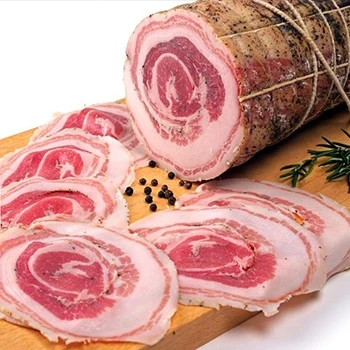
Pancetta is an Italian, salt-cured meat cut from pork belly. It's usually seasoned with spices and herbs such as black pepper, rosemary, bay leaves, and garlic.
The curing process uses pink salt or sodium nitrate to turn the pork belly into a distinctive bright-red color. The Italian bacon is then rolled and hung to dry for several weeks.
Since it's not smoked, pancetta has a porky, savory flavor similar to bacon but richer and more profound.
This cured pork is an excellent addition to Italian antipasti platters, pasta, and spaghetti.
Nutrition Facts
As per USDA, a 100g serving of pancetta has the following nutritional content:
- 357 calories
- 839 mg sodium
- 32.14 g fat
- 17.86 g protein
- 1.79 g carbohydrate
- 1.29 mg iron
- 36 mg calcium
- 4.3 mg vitamin C
- 45 mg cholesterol
What Is Bacon?
Bacon is made from pork belly and can substitute pancetta excellently. It's also cured with salt, nitrites, and sometimes sugar.
However, after curing for a few weeks, the bacon goes through a cold-smoking process. This type of smoking is done with different kinds of wood, such as apple or maple, adding a unique woody twist.
Nutrition Facts
A 100g portion of bacon has the following nutrients:
- 556 calories
- 33.33 g protein.
- 1833 mg sodium
- 12.4 mg iron
- 50 g fat
- 83 mg cholesterol
Key Differences Between Pancetta vs Bacon

Pancetta and bacon differ because of the preparation method, texture, taste, and flavor.
1. Preparation Method
While they are both cured, pancetta is not smoked, and bacon is. It is slightly dry, while the pancetta is moist.
In terms of preparation, bacon is still raw and should be cooked. Pancetta, on the other hand, can be cooked or eaten raw.
2. Taste And Flavor
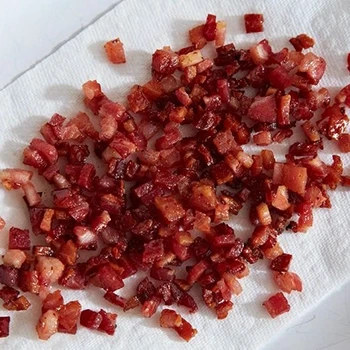
It's easy to differentiate pancetta and bacon by their taste and flavor. Pancetta is noticeably meaty and savory, just like bacon, but it's purer, richer, and not overpowered by the earthy, smoky flavor in bacon.
In my experience, cooking pancetta takes less time and has a deeper, juicier porky flavor.
Bacon can be juicier when appropriately cooked at a specific temperature, but it can also dry up quickly since it's already lost its moisture during the smoking process.
3. Texture
Pancetta also has a delicate, silkier, buttery texture, unlike bacon which is greasier due to its fatty cut. Unlike pancetta, bacon is also chewier since it takes longer to cook over medium heat.
I prefer popping my thinly sliced bacon in a boiler for about 15 minutes until partially cooked before tossing them on a pan. This method reduces shrinkage while also rendering it a perfectly crisp slice.
Nutritional Value of Pancetta vs Bacon

Both pork belly meats contain varying amounts of necessary proteins, minerals, and vitamins.
1. Proteins
Bacon has a higher protein content than pancetta but contains more fats and cholesterol. It stands out at 33.33g per 100g serving, twice as much as in pancetta.
Since the body can absorb up to 25g of high-quality protein in bacon, eating bacon will provide more health benefits [1].
2. Fats
A 100g of pancetta contains 32.14g of fat compared to 50g in Bacon. This means that bacon has 1.6 times the fat content as pancetta.
If you want a reasonably fatty product, pancetta is your safest bet.
3. Calories
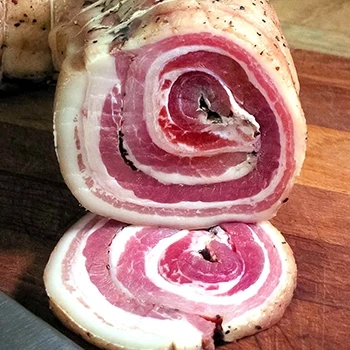
Both pork belly products have a good amount of calories.
Pancetta tends to be lower in calories than bacon. In moderation, it makes for a delicious ingredient option.
I recommend eating pancetta if you're trying to lose weight and on a diet that requires fewer calories.
Overall, bacon makes a delicious ingredient option if taken in reasonable amounts.
"Remember to moderately alternate between pancetta and bacon to maximize the intake of essential nutrients."
- Stephanie Greunke, Wisconsin-based Registered Dietician
Related Articles:
4. Sodium
While both are flavorful ingredients, it's important not to overindulge and be mindful of the sodium numbers that might be too high in multiple servings.
In this regard, a recent study has shown that excessively high sodium intake can
increase blood pressure and the risk of kidney disease [2].
Ways To Use Pancetta and Bacon in the Kitchen

If you want to add depth to your home-cooked meals, I recommend using only premium-quality pancetta or bacon sourced from a reliable source like ButcherBox.
Since they taste similar, you can substitute bacon for pancetta in any of your recipes.
Here are four ways to use pancetta or bacon in the kitchen:
- Wrap thin slices of pancetta or bacon around meat, seafood, or vegetables before cooking.
- Use thinly sliced or diced pancetta or bacon as a pizza topping
- Render the fat in bacon or pancetta and use it for cooking vegetables in a soup.
- Add cubed pancetta or bacon to pasta or spaghetti of your choice.
FAQs
Is Pancetta Less Salty Than Bacon?
Yes, pancetta is less salty than bacon. Pancetta contains 839g of sodium per 100g, unlike 1833 g of bacon.
Why Is It Safe to Eat Pancetta Raw But Not Bacon?
It is safe to eat pancetta raw because pancetta undergoes an intense curing process that stops the bacteria growth, unlike bacon which is cold smoked. Thin slices of pancetta are generally eaten raw in salads, sandwiches, or antipasti platters.
References:
- https://www.ncbi.nlm.nih.gov/pmc/articles/PMC5828430/
- https://pubmed.ncbi.nlm.nih.gov/27566757/



